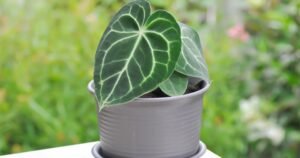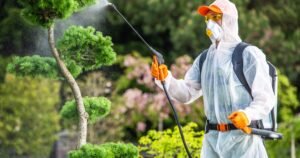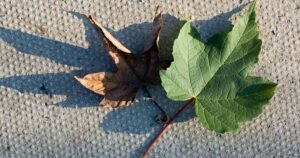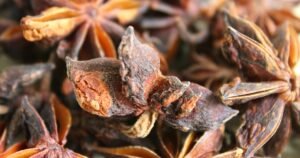Best Plants for Self-Watering Pots:
- Peace lily
- Snake plant
- African violet
- Jade plant
- Ferns
- Umbrella palm
- Calatheas
- Widow’s-thrill
- Cherry tomato
Self-watering pots are an excellent solution for individuals looking to maintain healthy and thriving plants without the constant worry of watering. These innovative containers have a built-in reservoir that allows plants to draw water as needed, providing a consistent moisture supply.
Best Plants for Self-Watering Pots? However, not all plants are equally suited for self-watering pots. In this comprehensive guide, we will explore the best plants to thrive in self-watering pots, considering various factors such as water requirements, growth patterns, and overall adaptability.
Detailing Self-Watering Pots
Self-watering pots, also referred to as wick pots, incorporate a unique design that caters to the plant’s water needs autonomously.
These containers consist of two parts: an upper pot where the plant resides and a lower reservoir that stores water.
The two parts are connected by a wick, usually made of absorbent material that draws water upwards from the reservoir into the soil, following the principle of capillary action.
The self-watering mechanism ensures the plant receives a steady supply of water, reducing the risk of both overwatering and underwatering.
Moreover, these pots often have a clear water level indicator, aiding in timely reservoir refilling.
These pots are particularly useful for those with busy schedules or for plants that require a steady moisture level to thrive.
However, it’s essential to remember that self-watering pots do not replace the need for regular plant care, such as providing adequate sunlight, maintaining optimal temperature, and ensuring a balanced nutrient supply.
- Mechanism: How self-watering pots function, including the reservoir, wicking mechanism, and water uptake process.
- Benefits: Discuss the advantages of using self-watering pots, such as reduced watering frequency, prevention of overwatering or underwatering, and improved plant health.

Factors to Consider When Choosing Plants for Self-Watering Pots
- Water Needs: Consider the water requirements of different plants, including their tolerance to drought or excess moisture.
- Root System: Assess the root structure of plants and their adaptability to the confined space of self-watering pots.
- Growth Habit: Examine the growth pattern of plants, including their height, spread, and overall shape, to determine suitable pot sizes.
Succulents and Cacti
- Water Requirements: Discuss the low water needs of succulents and cacti, making them ideal candidates for self-watering pots.
- Root Structure: Highlight the shallow root systems of succulents and how they adapt well to the limited space in self-watering pots.
- Examples: Provide a list of popular succulents and cacti that thrive in self-watering pots, such as Aloe Vera, Echeveria, and Haworthia.
Herbs
- Water Requirements: Explain the moderate water needs of herbs and how self-watering pots can maintain optimal moisture levels.
- Root Structure: Describe the relatively compact root systems of herbs, making them suitable for self-watering pots.
- Examples: List common herbs like basil, parsley, and thyme that grow well in self-watering pots.

Leafy Greens and Vegetables
- Water Requirements: Discuss the moderate water needs of leafy greens and certain vegetables, making them compatible with self-watering pots.
- Root Structure: Highlight the fibrous root systems of these plants and their adaptability to self-watering pots.
- Examples: Provide a range of leafy greens and vegetables, such as spinach, lettuce, and kale, that thrive in self-watering pots.
Indoor Tropical Plants
- Water Requirements: Discuss the moderate water needs of many indoor tropical plants, making them suitable for self-watering pots.
- Root Structure: Explain how tropical plants often have compact root systems that fit well in self-watering pots.
- Examples: Mention popular indoor tropical plants like pothos, spider plants, and peace lilies that can be grown in self-watering pots.
Flowers
- Water Requirements: Discuss the varying water needs of different flowering plants and how self-watering pots can provide a consistent water supply.
- Root Structure: Explain how some flowering plants have shallow root systems, making them suitable for self-watering pots.
- Examples: List flowering plants like African violets, petunias, and marigolds that thrive in self-watering pots.
Maintenance Tips for Plants in Self-Watering Pots
- Monitoring Water Levels: Guide how to monitor and maintain the water levels in the reservoir of self-watering pots.
- Fertilizing: Explain the importance of regular fertilization to supplement nutrients since self-watering pots may leach nutrients faster.
- Pruning and Repotting: Offer tips on pruning and repotting to ensure the plants continue to thrive and grow within the self-watering pots.
- Cleaning the Pots: It’s crucial to maintain cleanliness in self-watering pots to prevent the buildup of algae or harmful bacteria. Regularly clean the reservoir and replace the wick as needed to ensure optimal functionality. Additionally, consider using a water-soluble disinfectant or mild detergent to clean the pot thoroughly. Always rinse well after cleaning to ensure no harmful residues are left behind.

Troubleshooting Common Problems
- Overwatering: Discuss the signs of overwatering and how to adjust water levels in the reservoir to prevent future issues.
- Underwatering: Describe the symptoms of underwatering and how to ensure the wick is functioning properly to provide the necessary moisture.
- Root Rot: Explain what causes root rot in self-watering pots, including stagnant water and poor aeration, and how to address it.
- Nutrient Deficiency: Outline the signs of nutrient deficiency and the role of fertilization in maintaining plant health in self-watering pots.
Conclusion
Best Plants for Self-Watering Pots? Self-watering pots offer an innovative and effective solution for maintaining the health and vitality of various types of plants. From succulents and cacti to herbs, leafy greens, indoor tropical plants, and flowering species, these pots provide a consistent water supply, reduce the risk of overwatering or underwatering, and promote the overall well-being of the plant. However, it is crucial to monitor water levels, regularly fertilize, and take care of pruning and repotting to ensure the best results. By following this comprehensive guide, you can successfully grow and nurture your favorite plants in self-watering pots, creating a lush, vibrant indoor or outdoor garden.
FAQs
What plants do best in self-watering pots?
Self-watering pots are ideal for plants that prefer consistent moisture, such as tropical plants, herbs, and certain vegetables. Succulents and cacti, known for their low water needs, also thrive in these pots due to the reduced risk of overwatering. However, it’s crucial to consider the specific water needs and root structure of each plant species when selecting self-watering pots.
Are self-watering pots good for all plants?
No, not all plants are suited for self-watering pots. A few species, such as some varieties of orchids and desert roses, prefer a drier environment and may need to adapt better to the moisture levels in these pots. It’s important to research the water requirements of each plant species before deciding to use a self-watering pot. Enjoy your journey in creating a healthier environment for your plants with self-watering pots.
Which herbs are self-watering pots?
Herbs that thrive in self-watering pots include moisture-loving species such as basil, parsley, and thyme. These herbs use up a lot of water during their growth and can benefit from a consistent moisture supply. Mint, chives, and oregano are other herbs that also adapt well to self-watering pots, making it easier for you to maintain a fresh, healthy herb garden at home.
Can you overwater plants with self-watering pots?
Yes, overwatering is possible even with self-watering pots if the reservoir is filled too frequently or the plants need to consume the water faster. This could lead to waterlogged soil and root rot. Ensuring the reservoir is well-filled and understanding the specific watering needs of your plants can help avoid these potential problems.











